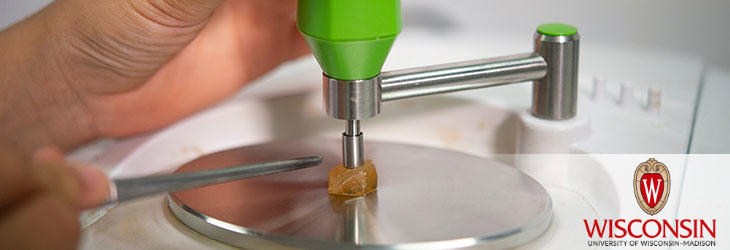Research Tools

Invertebrate Models for Studying Traumatic Brain Injury
WARF: P130267US02
Inventors: David Wassarman, Barry Ganetzky
The Wisconsin Alumni Research Foundation (WARF) is seeking commercial partners interested in an in vivo screening method for identifying therapeutic agents to treat traumatic brain injury.
Overview
Every year about two million cases of traumatic brain injury (TBI) occur in the United States, caused by falls, car crashes, sports collisions and other injuries. TBI can lead to a host of health problems such as neurodegeneration, memory deficit and sleep disorder. The estimated cost of treatment and lost productivity due to TBI surpasses $76 billion in the U.S. alone.
Despite the urgent need for effective TBI treatments, none have been developed to date. Drug candidates tested in standard animal models (mostly rats and mice) have all failed in clinical trials. This failure is due in part to the complex nature of TBI as well as the brain’s elaborate response to injury.
Moreover, a significant disadvantage of using rodents is that they are unsuitable for high throughput drug screens, which could revolutionize TBI treatment.
Despite the urgent need for effective TBI treatments, none have been developed to date. Drug candidates tested in standard animal models (mostly rats and mice) have all failed in clinical trials. This failure is due in part to the complex nature of TBI as well as the brain’s elaborate response to injury.
Moreover, a significant disadvantage of using rodents is that they are unsuitable for high throughput drug screens, which could revolutionize TBI treatment.
The Invention
UW–Madison researchers have developed a method for inflicting closed head TBI in invertebrates. The method can be used to screen candidate therapeutic agents for treating TBI.
Specifically, the researchers created a device that mechanically induces TBI in organisms such as Drosophila melanogaster (fruit flies), which respond to impact trauma in many of the same ways as humans. Subjecting these organisms to a controlled impact and dosing with test agents could help identify the biological pathways associated with the consequences of TBI as well as enable screens for therapeutic compounds.
The device consists of a spring attached to a vial containing up to 100 flies. The spring is pulled back and then released, striking the vial against a rubber pad to inflict brain trauma as the flies collide with the bottom and walls of the vial. The device can be adjusted to inflict injury at differing severities.
Specifically, the researchers created a device that mechanically induces TBI in organisms such as Drosophila melanogaster (fruit flies), which respond to impact trauma in many of the same ways as humans. Subjecting these organisms to a controlled impact and dosing with test agents could help identify the biological pathways associated with the consequences of TBI as well as enable screens for therapeutic compounds.
The device consists of a spring attached to a vial containing up to 100 flies. The spring is pulled back and then released, striking the vial against a rubber pad to inflict brain trauma as the flies collide with the bottom and walls of the vial. The device can be adjusted to inflict injury at differing severities.
Applications
- Investigating closed head traumatic brain injury
- Supporting technology for drug screening
Key Benefits
- Unique in vivo screening method
- Offers new hope for treating TBI
- Simple design, reproducible results
- Enables new animal models for TBI research
- Flies and worms are cheaper to raise and maintain than rodents, and lend themselves to high throughput screens.
Stage of Development
Using their new device, the researchers have obtained preliminary data demonstrating that in flies, as in humans, TBI can cause lethality and neurodegeneration, activate the innate immune system and affect sleep patterns. Outcomes are dependent on age, genotype, impact severity and the interval between repetitive impacts.
Additional Information
For More Information About the Inventors
Related Technologies
Tech Fields
For current licensing status, please contact Jennifer Gottwald at [javascript protected email address] or 608-960-9854